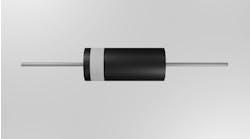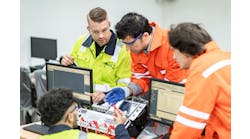I remember my first exposure to a programmable logic controller (PLC) back in the early 1990s. It was a donated Texas Instruments unit that was used in a PLC class at the community college I was attending after the Navy.
After years of actual relay logic onboard an aircraft carrier, and I do mean actual hardware relay logic, this PLC thing was amazing.
Get your subscription to Control Design’s daily newsletter.
PLCs are still visible in every industry. The question of the future of traditional PLCs is complex, and it is evolving.
Traditional PLCs still play a critical role in many industrial automation systems. They were built for deterministic, high-performance control in environments that demand high reliability. For many industrial applications, this remains the core strength of PLCs. They are optimized for tasks like discrete logic control, safety-critical operations and simple motion commands, where performance, uptime and safety are paramount.
They have historically been very robust, built to withstand extreme temperatures, vibration and other harsh industrial conditions. This makes them suitable for applications like heavy machinery, mining, oil and gas, and other rugged environments. They also offer a straightforward programming environment—often in ladder logic, function block diagrams or structured text— which is simpler for engineers and technicians to learn and troubleshoot. This simplicity is still a significant advantage in many industries.
PLCs have been the backbone of industrial automation for decades, and many factories still rely on them because they integrate seamlessly with existing infrastructure, provide strong vendor support and conform to industry standards.
In niche applications where determinism, simplicity, reliability and certification are critical, PLCs will likely continue to dominate. These applications include safety, smaller control systems and legacy systems.
PLCs may not evolve dramatically, but they will likely integrate more closely with industrial PCs (IPCs) and soft PLCs in hybrid systems—PLCs can handle simple tasks, while IPCs handle complex, data-driven tasks.
We’re likely to see more of this hybrid approach in the future. PLCs will coexist with IPCs in many industrial settings. PLCs will handle straightforward control tasks, and industrial PCs will manage the more complex and interconnected systems.





